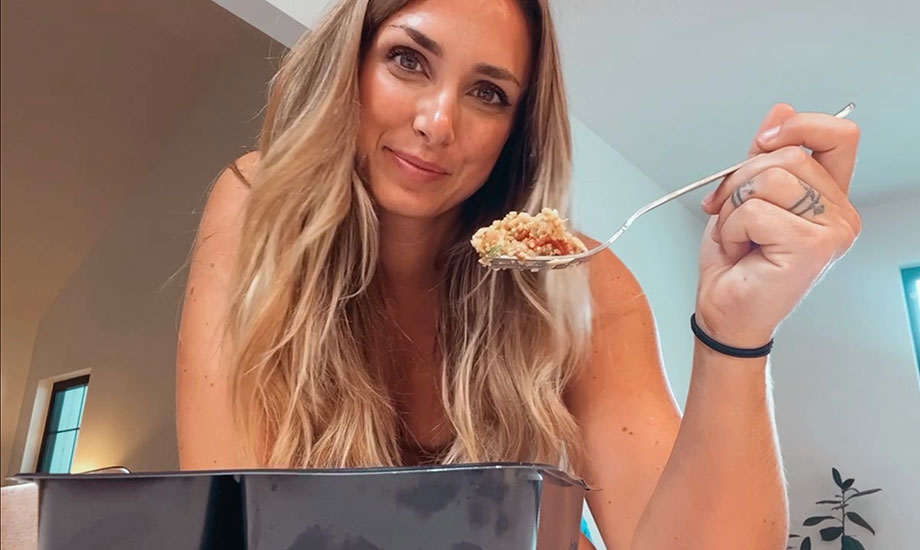We test and review fitness products based on an independent, multi-point methodology. If you use our links to purchase something, we may earn a commission. Read our disclosures.
Weight loss can be a tricky subject—and a money-making one for companies that are hoping to sign you up for their weight loss program. There are lots of promises out there about how to lose body fat, but a lot of companies either fail to deliver, or they use problematic tactics that might lead to rapid weight loss at first, but don’t do you any good beyond that.
We looked at many popular companies and weeded some out to come up with this short list of the best weight loss programs.
As a certified nutritionist, I took a deep dive into some popular weight loss programs for this guide, narrowing down the options to several that we feel comfortable recommending to you (and several that we don’t). We then had GGR’s expert product testers—who are certified personal trainers, nutrition coaches, competitive triathletes, and weightlifting coaches—try out each program and give their unfiltered thoughts.
RELATED: Best Weight Loss Apps
The testers looked at things like:
- Instruction: Does the program offer insightful, research-based instructions? And is it easy to follow?
- Accountability: Does it provide a way to keep you on track?
- Price: Is it expensive?
- Safety: Does it promote healthy eating habits?
I also asked registered dietitians Blair Peryn and Perry Nix to weigh in on some of these programs—and about healthy weight loss in general. Rest assured that these best weight loss programs have been vetted by our team, and you’re bound to find something that works for you.
Editor’s Note and Medical Disclaimer
This article is intended for educational and informational purposes only. It is not intended as a substitute for medical advice. Weight loss programs are not recommended for people with a history of disordered eating. For health advice, contact a licensed healthcare provider. If you need help with disordered eating, contact NEDA.
9 Best Weight Loss Programs of 2024
- Best Weight Loss Program Overall: WeightWatchers
- Best Personal Training Program for Weight Loss: Future
- Best Weight Loss Program for Busy People: Diet-To-Go
- Best Weight Loss Program for Beginners: Trifecta
- Best Weight Loss Program with Community: Noom
- Best Weight Loss Program Meal Delivery: Home Chef
- Easiest-to-Follow Weight Loss Program: NutriSystem
- Best Weight Loss Program for Prepped Meals: Factor
- Best Personalized Weight Loss Program: Mediterranean Diet
How We Picked the Best Weight Loss Programs
Weight loss can be a tricky subject. While the overall goal may be the same, there are many avenues to get there. Because of this, we take a pragmatic approach to weight loss. We don’t get caught up in dietary dogma. Instead, we think the best way to lose weight is to do what works for you.
- Research: We looked at each program holistically and paid attention to the types of foods the companies were offering, the claims they were making, and the approach they took. We eliminated any weight loss programs that made outlandish claims or over-promised a certain amount of weight within a short period of time. We also eliminated programs that were too calorie-restrictive or required you to swap out actual meals for processed bars and shakes.
- Expert Verifications: These weight loss programs were personally tested by a team of certified personal trainers, CrossFit coaches, nutrition coaches, and registered dietitians—many of whom know what it’s like to be on the other side of the weight loss journey. Our staffers with such experiences shared their thoughts on these programs and whether they would’ve used them.
- Ordering Flexibility: How is the general ordering experience? Are your options clearly laid out, and is it easy to customize what you want by picking recipes/meals, skipping a week if you want to, etc.?
- Ease of preparation: Meal delivery services offer an array of options, from fully prepared meals to those in which you’ll have to do the cooking and cleanup. How entailed is the preparation process? Are the directions clear?
- Portion sizes: Meal kit delivery services let you choose how many servings you want per meal, usually from two to six. This won’t be the case with prepared meals, but this category also judges how big the actual meal is—were you satisfied after eating it, still hungry, or stuck with too many leftovers?
- Access to nutritional information: Having easy access to ingredient lists and nutritional information on the website is important. Is it easy to find an ingredient list and identify macros, or does the company make it difficult?
Best Weight Loss Program Overall: WeightWatchers
Good for: Anyone who wants to jump in without much fuss; those interested in tracking macros without a lot of extra effort
Best Overall
WeightWatchers
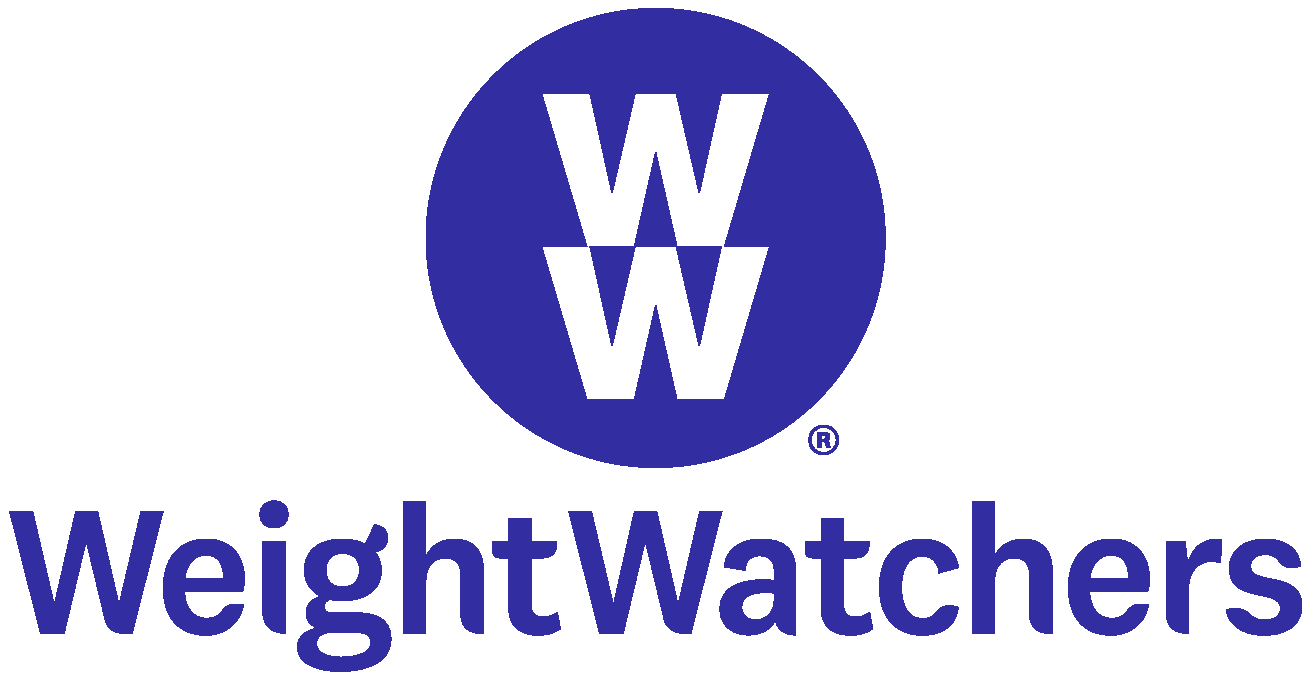
Product Highlights
- Designed specifically for weight loss
- Targeted quizzes to find the right plan for you
- Two membership options, starting at $23 per month
- Online-only or hybrid memberships available
- Works on a point budget system—no “off-limit” foods
- 24/7 support chat
Pros & Cons
Pros
- Point system allows you to tailor the plans to your preferences
- Online or hybrid options provide more flexibility
- Can choose a plan that works within your budget
- Includes an app for easier tracking
Cons
- Assigning Points to food is hard to translate to real-world eating when off the plan
- Tracking can be tedious
- Requires weekly weigh-ins, which can be problematic for some
Bottom Line
WeightWatchers is a flexible weight loss program that allows you to tailor your diet and lifestyle to your needs and preferences. There are two membership options: one for those who prefer in-person support, and one for those who are looking for an online program.
There are a lot of gimmicks out there, but WeightWatchers is a tried-and-true weight loss program with proven success. The company has been around since 1963, and is constantly evolving its approach based on feedback from community members and new advancements in weight loss science.
Kate Meier, GGR’s head of content and a competitive weightlifter, used WeightWatchers for 30 days to fine-tune her diet to lose weight and fuel her workouts. “I lost around 5 pounds in 30 days. I do credit WeightWatchers with giving me a really good foundation of healthy eating habits,” Kate says in her full WeightWatchers review.
The recipes were one of her favorite parts of the program—5 out of 5. “I’m still using a lot of the recipes,” Kate says. “I still start my day with a protein smoothie with tons of fruit and chia seeds, and I pre-make those breakfast cups on Sundays to eat throughout the week.”
One of her few complaints is that the weight loss program lacks insight into a meal’s macronutrients—protein, fats, and carbohydrates. “In general, this probably isn’t a dealbreaker for most people,” Kate says. “However, for those looking specifically to hit certain protein goals, like myself, this means having to use another app to track food.”
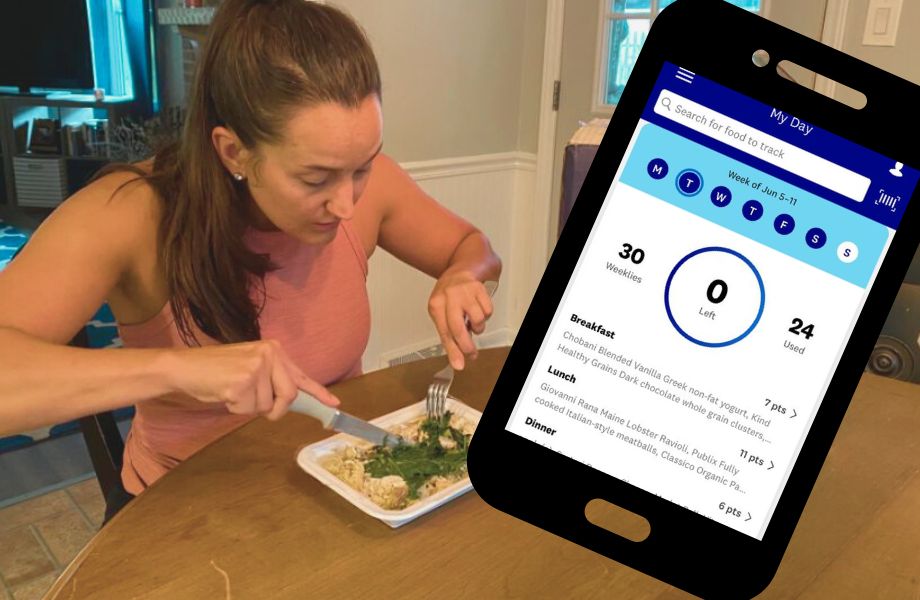
Throughout the years, one thing that’s remained constant is the company’s Points® system. While there have been changes in approach, the general principles are the same: Foods are given a specific number of Points based on their nutritional composition (calories, protein, fats, fiber, and added sugars, for example).
When signing up, you’ll be asked about your goals, and you’ll receive a personalized Points budget to help you get there. At the start of each day, your Points budget resets—the goal is to stay at or under the allotted Points for that day. This is basically a simplified system of tracking macros for weight loss, which is a good introduction to the concept for beginners.
WeightWatchers used to be strictly in person, which was a downside for people who didn’t want to participate in weigh-ins in front of other people. Now, there are two membership options: Core and Premium.
The Core membership gives you access to a nutrition plan, recipes, trackers, and a digital community. It starts around $23 per month, depending on current offerings. The Premium membership gives you everything in the Core membership, plus coach-led workshops that you can attend virtually or in person. You’ll also get more one-on-one time with a coach who can give you feedback on your behavior and progress and recommend changes. This premium membership is $45 a month.
No matter which membership you choose, you’ll get access to an app where you can track your Points, daily activity, and weight progress. You can also connect with other members if you’re a premium member.
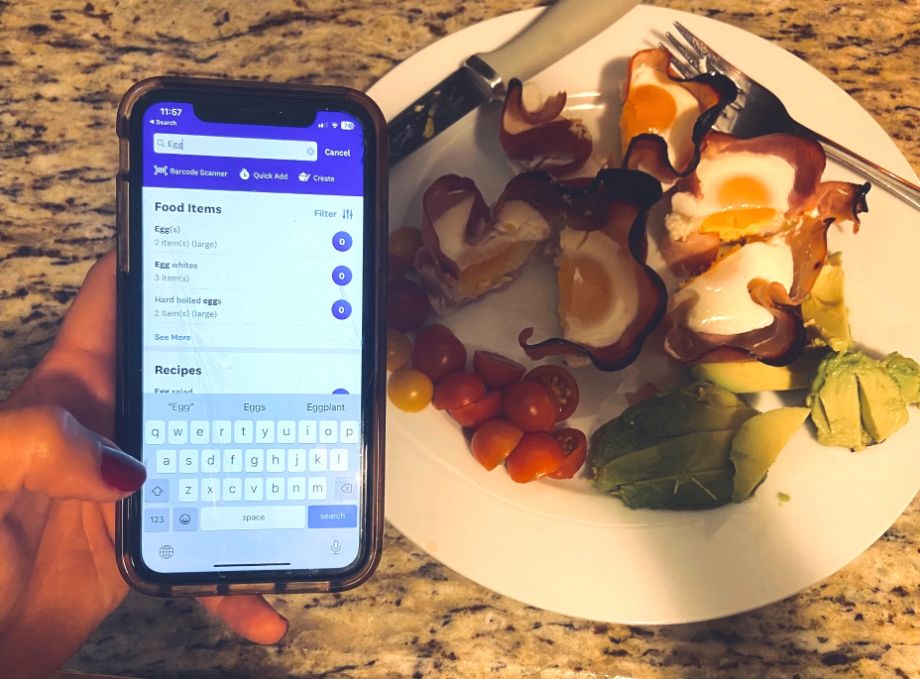
The downside of WeightWatchers is that it doesn’t really teach you how to track your food intake outside of the Points system, but, it’s a good introduction to the concept and a way to dive in without much complication.
“Although the program encourages mostly nutrient-dense foods, no foods are completely off limits, which may enhance the sustainability of the program for those looking for a balanced approach to weight loss,” says Perry Nix, MS, RD, LD. “On the flip side though, the Point system used to keep members in a caloric deficit for weight loss may result in feelings of deprivation which can promote a restrict-binge cycle.”
According to the WeightWatchers website, they have helped millions of people lose weight over the last 55 years.
| Subscription options | Core and Premium |
| Price | Starts at $15/month for Core and $30/month for Premium |
| Access to coach | Yes |
| Specific diets supported | All; you can choose your own foods |
| Food/calorie tracker? | Yes (through app) |
Best Personal Training Program for Weight Loss: Future
Good for: Those who want virtual personal training and don’t need nutritional guidance
Best Personal Training Program
Future

Pros & Cons
Pros
- Incredible user interface; very well designed and intuitive
- Choose your own coach based on your personal preferences and goals
- Lots of variety in your workouts
Cons
- $199 per month membership cost
- No real-time coaching from your trainer
Bottom Line
Proper nutrition is a vital component of weight loss and maintaining a healthy weight. But if you’ve got the food part down and just want one of the best personal training programs, Future can help you out. Future is a virtual personal training platform that gives you direct access to coaches all over the country.
Everything is done through an app. When you sign up, you’ll meet with your coach via FaceTime to go through your goals and provide a rundown of everything you have access to (a gym, home equipment, etc.). If you don’t have access to any equipment, that’s okay, too. Your coach can develop a plan using whatever you have.
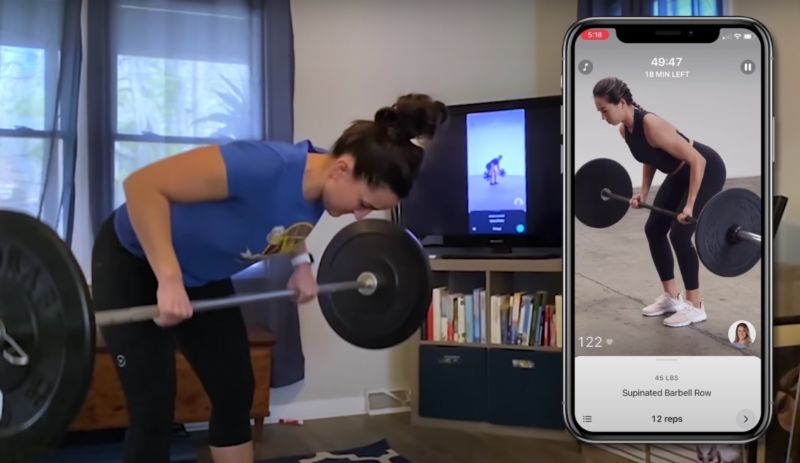
From there, your coach will build weekly training plans for you. As you train, you can ask questions via the app, and your coach will respond ASAP. You can also schedule FaceTime check-ins as needed.
Competitive weightlifter and GGR Head of Content Kate Meier rates the accountability a 5 out of 5 due to the fact that you develop a relationship with your coach. “[My coach] would check in with me almost every day to see how I was feeling, how the workout went, or ask why I hadn’t done the workout yet. This was a big motivator for me.”
If you’re not vibing with your coach for some reason, you can request a new one anytime. Future can help match you with one, or you can browse all coaches on the site and pick one yourself. Coaches come from all different types of backgrounds, and when you’re browsing their profiles, you can see qualifiers like “motivating,” “even-keeled,” or “high-energy” to make a decision about who you think would be the best fit for you.
Your coach can track your progress through an Apple Watch if you have one—if not, you’ll check in manually for now. For the record: Future does recommend the watch to get the most out of the program. They’re working on supporting other fitness trackers, but Apple Watch is the only compatible device at the moment.
Read our full Future app review for more details about why we really enjoy this platform.
| Subscription options | Monthly |
| Price | $199/month (sign-up promos for your first month) |
| Access to coach | Yes |
| Specific diets supported | N/A |
| Food/calorie tracker? | No |
Best Weight Loss Program for Busy People: Diet-To-Go
Good for: Those who want prepped meals and are okay with them arriving frozen
Best for Busy People
Diet-To-Go
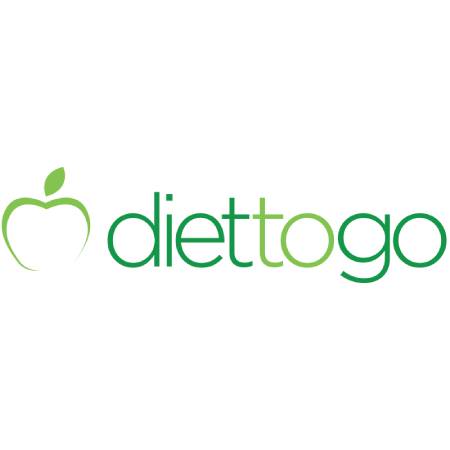
Product Highlights
- Meal delivery service with 5 diet plans
- Ready to heat chef-prepared meals
- Mediterranean diet and low-carb options
- Choose up to 21 meals per week
- Customized meal plans available
- New meals every 5 weeks
Pros & Cons
Pros
- Appeals to a variety of diets
- Meals are ready to eat in 3 minutes
- Can order all 21 meals for the week
- Meal plans are curated for you, but you have the option to customize it
Cons
- Very limited customization
- Doesn’t offer any organic options
- Calories are very low on the standard plan
Bottom Line
Diet-To-Go accommodates a number of dietary preferences and restrictions, but the menu doesn’t have as much variety as some of the other programs. These are heat-and-eat meals, so they’re ready to eat in three minutes.
Let’s face it: We’re all busy, and sometimes a hectic schedule can get in the way of your weight loss goals. A meal delivery service can save you a bunch of time, since you don’t have to meal plan, shop, or cook (depending on which one you choose).
Lindsay Scheele, lead reviewer for Garage Gym Reviews Everything, rated the variety a 5 out of 5, but the taste was hit-or-miss and earned a 3 out of 5 rating. “Some were perfectly seasoned,” she says, “while others were really bland.”
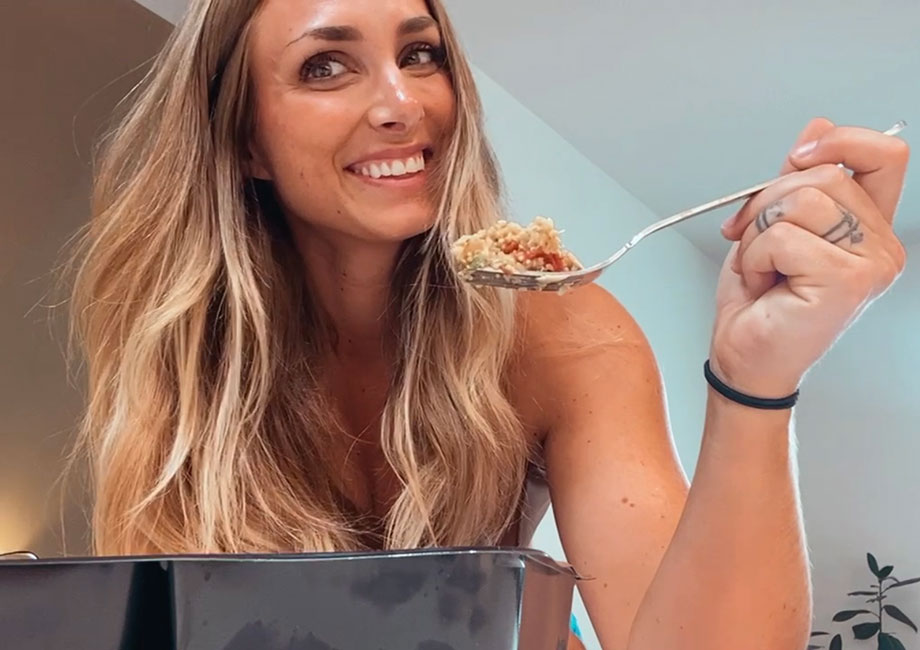
There are many options out there, but Diet-To-Go is a meal delivery service that’s specifically targeted to dieters who want to lose weight. There are five meal plan options: Balance (a calorie-controlled plan that also limits carbs, fat, and cholesterol), Balance-Diabetes (similar to the regular Balance plan, but with lower glycemic foods to help manage blood sugar), Keto-Carb30 (a carb-restricted plan that provides 30 grams of net carbs per day), Vegetarian (a classic vegetarian-style diet with dairy, eggs, and beans as the main protein sources), and Mediterranean (following the Mediterranean diet full of veggies, fruit, nuts, beans, grains, fish, and lean meats.)
RELATED: High-Protein Breakfast
While you can pick a specific plan, there’s not a lot of customization beyond that. The only thing you can really change is whether your plan includes seafood or not. Other than that, you’re limited to choosing from the available menu options. To add variety and help with food boredom, menus are on a five-week rotation cycle, which means the same meal choices will repeat every five weeks.
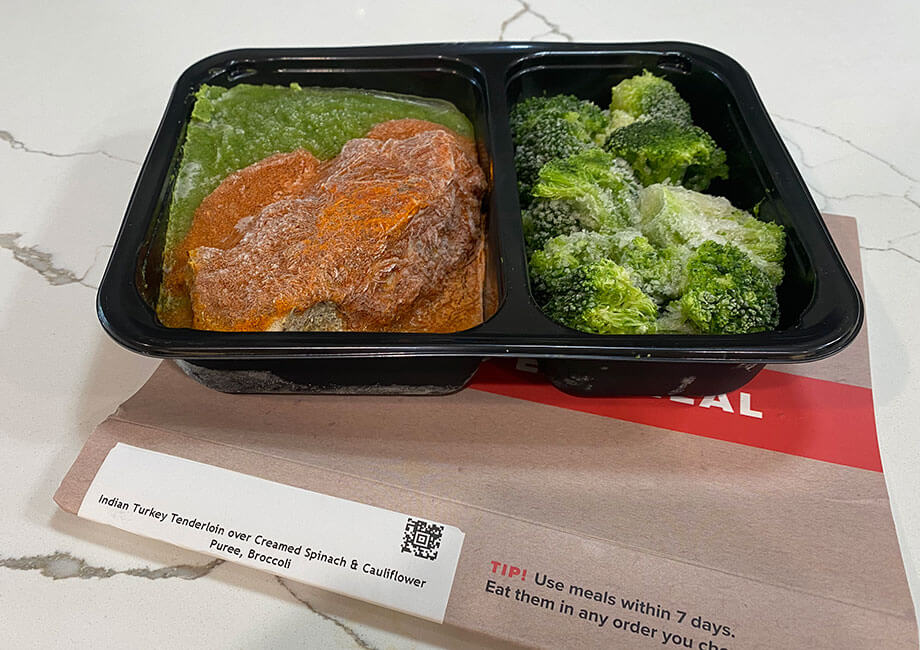
All meals are portioned out and supply 1,200 calories on the women’s standard plan and 1,600 calories on the men’s. This is on the lower side, especially if you’re adding exercise to your routine. However, it can be a good baseline and would allow you to add some healthy snacks and sides as needed. “While this low-calorie plan may result in quick weight loss, the weight will likely return after you stop the program,” says Perry Nix, MS, RD, LD. “Ultimately, cutting calories too drastically can slow metabolism and increase hunger.”
You can get your whole week covered with 21 meals, or choose a five-day plan that sends 15. Meals arrive frozen and can be stored in your freezer for up to 30 days (or your refrigerator for seven).
| Subscription options | Weekly |
| Price | Starts at $10.76 per meal |
| Access to coach | No |
| Specific diets supported | Low-calorie, diabetes-friendly, low-carb, vegetarian, Mediterranean |
| Food/calorie tracker? | No |
Best Weight Loss Program for Beginners: Trifecta
Good for: Those who want high-quality meals but don’t want to cook
Best for Beginners
Trifecta
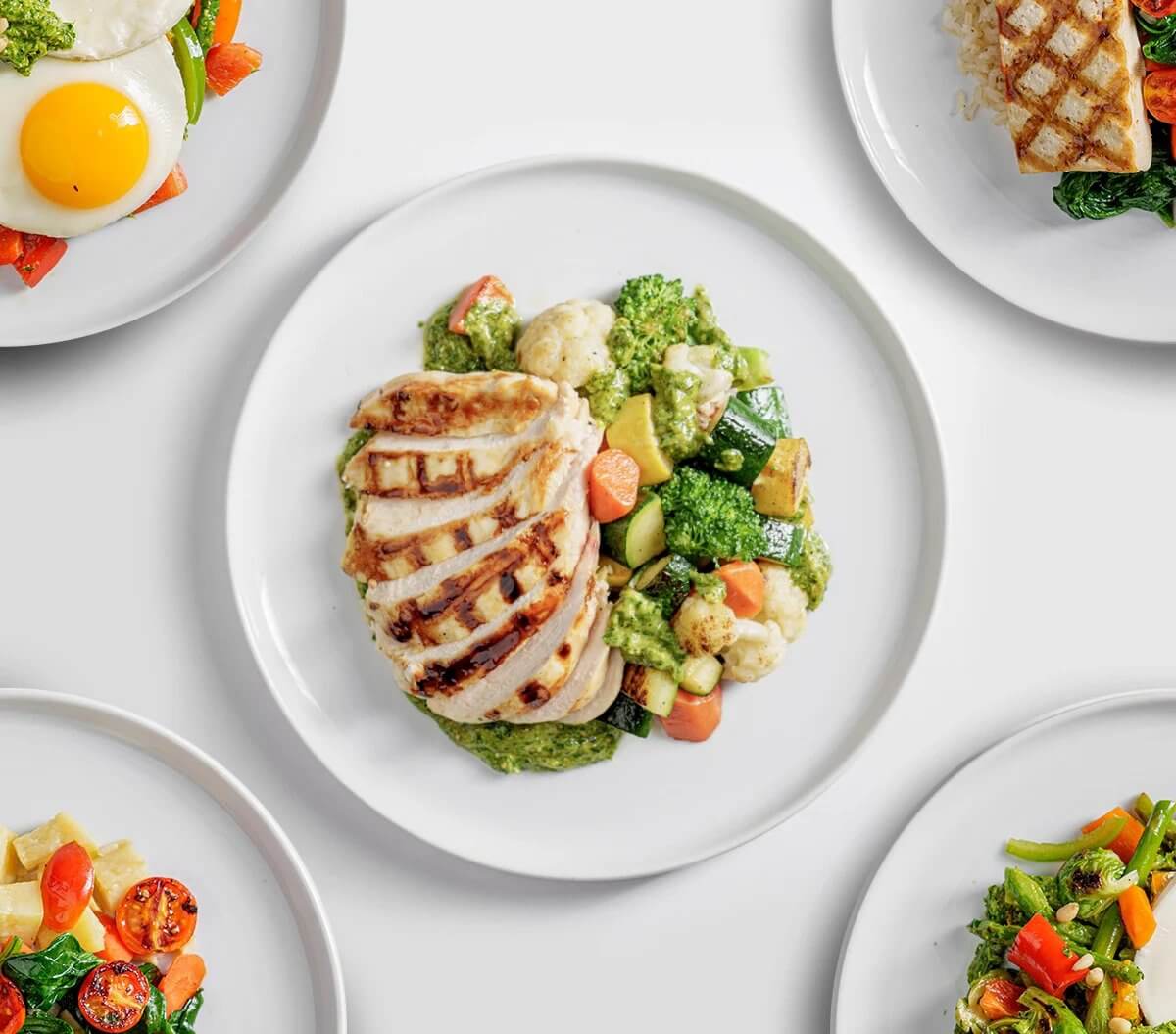
Product Highlights
- Meal plans or bulk meal options available
- All food is pre-made and arrives fresh (but you can freeze it)
- Six different menu plans, including clean, Whole30, paleo, keto, high-protein vegan, and high-protein vegetarian
- Meals are delivered weekly, but you can cancel anytime
- High-quality ingredients, with a focus on organic, locally sourced, and sustainable ingredients whenever possible
Pros & Cons
Pros
- Several types of meal plans available
- Can also choose a bulk meal prep option
- Can get breakfasts as well as entrees
- The company prioritizes high-quality ingredients
- Some customization available
Cons
- Expensive, but ingredients are high-quality
- Limited personalization available
Bottom Line
Trifecta combines convenience with healthy eating. While all meals are pre-cooked and pre-portioned, the ingredients are high-quality and preservative-free.
If you’re navigating a weight loss journey for the first time, you want the fewest barriers to resistance. Trifecta is a meal delivery service that offers convenience, but with a focus on healthy eating. There are two main options: prepped meal plans and bulk meal prep.
If you sign up for the meal plans, you’ll get up to 21 pre-cooked meals delivered each week. You can choose as few as five, or fill up your meal calendar with all the breakfast, lunch, and dinner options you need for the whole week.
Anthony O’Reilly, a certified personal trainer, nutrition coach, and GGR’s performance editor, tried Trifecta years ago and liked the convenience of balanced meals prepped and ready to eat, which is why it got a 5-out-of-5 on ease of preparation—all you have to do is throw the container in the trash and clean your fork when you’re done.
“The downside, though, is that these meals are made for the ‘I eat food for fuel, not for pleasure’ crowd and nobody else,” he says. “Unless they’ve drastically changed their recipes over the last few years, that is. I won’t be coy, I didn’t think their food tasted good at all.” That said, Anthony says that the Tex-Mex-inspired dishes were the best.
Kate Meier, GGR’s head of content and a competitive weightlifter, said she was a fan of her meals. “I tried multiple egg scrambles, a salmon meal, a chicken and broccoli casserole — and I really liked the taste of all of them,” Kate says. “For context, I typically eat pretty plainly, so I don’t need a crazy amount of flavor or spice.”
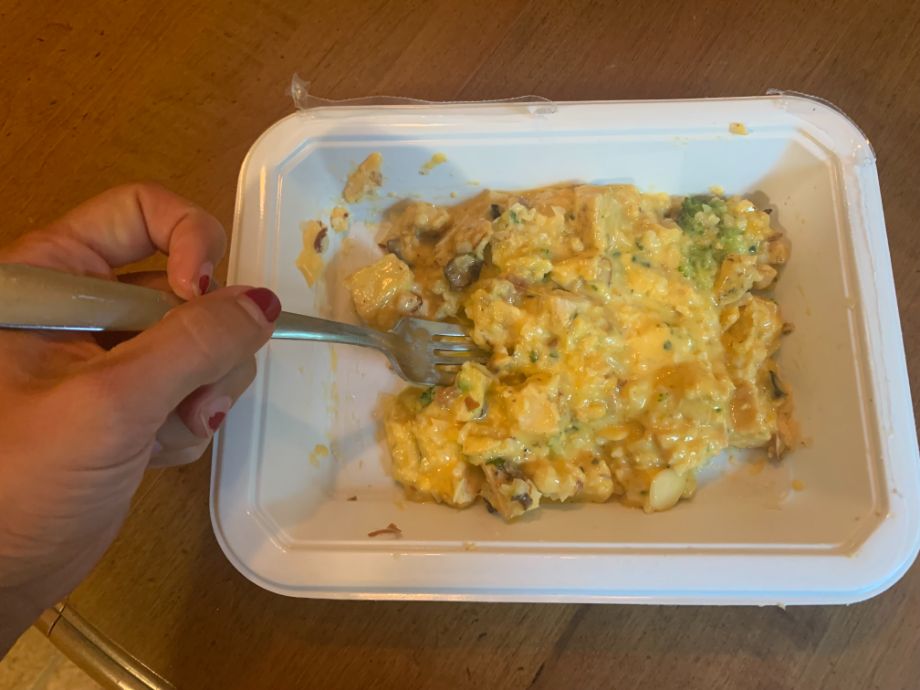
There are six meal plans, each of which is focused on a specific type of diet. These include paleo, keto, Whole30, high-protein vegan, high-protein vegetarian, and a “Clean” plan that doesn’t exclude any specific foods or macros—instead it focuses on high-quality ingredients without added sugars or other undesirable ingredients. All meals are gluten-free.
If you like the idea of putting together your own meals, but don’t want to cook (or grocery shop), Trifecta also has a meal prep option that includes cooked bulk items. There are various proteins, carbohydrates, and vegetables that you can mix and match to fill up your box.
For both the meal plans and the bulk prep option, Trifecta prioritizes quality. The company sources local and organic foods and uses grass-fed/pasture-raised proteins whenever possible. All foods arrive freshly cooked, and are never frozen like some other companies.
The bulk meal option provides a little more flexibility since you’re just choosing ingredients, but you can customize the meal plans to some degree, too. You can exclude up to two items (from a list of 10) from your menu.
When you sign up, you’ll be placed on the recurring subscription with boxes going out weekly. You can cancel any time, but it has to be at least a week before your next delivery or you’ll be charged. If you don’t like your first order, you can cancel and get a refund for up to seven meals.
Perry Nix, MS, RD, LD, says in our full Trifecta meal delivery review that because the company markets its meal prep services toward athletes, some of the meals may be too low-calorie. “You may want to add snacks between meals to have enough energy to power through your next training session,” she explains.
| Subscription options | Weekly |
| Price | Starts at $14.80 per meal |
| Access to coach | No |
| Specific diets supported | Paleo, Keto, Whole30, Vegan, Vegetarian, Gluten-Free and “Clean Eating” |
| Food/calorie tracking? | Yes (through app) |
Best Weight Loss Program with Community: Noom
Good for: Those who need the support from other users and a dedicated coach
Best With Community
Noom

Product Highlights
- Uses a psychology-backed approach to weight loss
- Provides behavioral guidance more than nutritional guidance
- App supports food, weight, and activity tracking
- Multiple membership options available
- A stress-relief plan is also available
Pros & Cons
Pros
- Gives you freedom to make your own choices
- Helps you identify patterns and behaviors that may be connected to your weight
- Flexible payment options
- 1:1 coaching plans are available for purchase
Cons
- Doesn’t offer much nutritional guidance
- May not be the best option for those who need a more structured plan
- Expensive on the month-to-month plan
Bottom Line
Noom is built on the psychology of weight loss. Instead of specific nutritional guidance, you’ll get lessons that are designed to help you break habits that may be contributing to your weight gain.
Noom is a different kind of weight loss program. Instead of digging deep into nutrition and fitness, Noom takes a psychology-based approach. The idea behind this approach is that your weight is intricately connected to your current habits and relationship with food (whether you’re aware of that relationship or its subconscious or not), and that making some behavioral changes can help set you on the path to weight loss
The goal of the program is to use daily lessons about your personal triggers and follow-up quizzes to bring awareness to your limiting habits and help you break them. All of this is done through an app that allows you to access all of your information. Instead of giving you a strict diet plan, your coach gives you the background knowledge and tools you need to make the appropriate lifestyle changes.
A GGR team member tried Noom for a short time because they were drawn to the psychology-based approach, and felt like this concept of calorie density versus calorie counting was helpful for learning how to eat properly and in a balanced way.
“It has changed by habits to eating more green food than orange or red,” the team member says, rating the app’s functionality a 5 out of 5. “I can also make sure I am eating enough protein, which was my issue originally.”
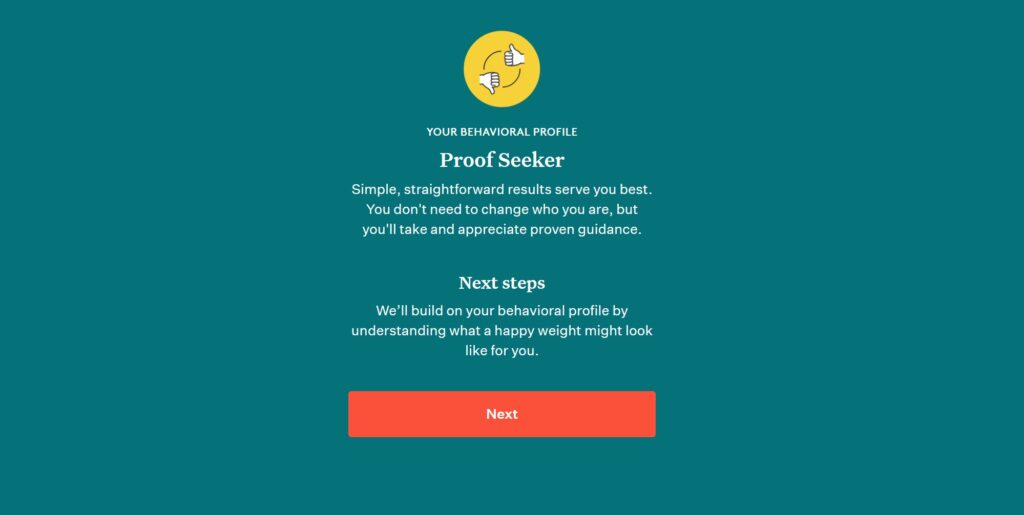
“Instead of doing all the work for you, Noom provides educational resources and tracking tools that empower participants to take an active role in improving their health,” says Perry Nix, MS, RD, LD. “And, the program encourages individuals to take accountability for their wellbeing by taking small, manageable steps toward their personal health goals.”
Noom also offers plans for one-on-one coaching, though you can do it on your own with just the app if you want.
With Noom, there are no “off-limit” foods. Instead, Noom categorizes food by color: green, yellow, and orange. Green foods are the least calorie-dense, yellow foods fall somewhere in the middle, and orange are the most calorie-dense. Once you’re given this information, you can make your own choices from there.
RELATED: High-Protein Foods List for Weight Loss
There are some limitations to this system. For one, some of the orange foods, like olive oil and peanut butter, may be calorie-dense, but they can still have a place in a healthy eating plan. People who are trying to navigate nutrition for the first time may confuse the concept a little bit.
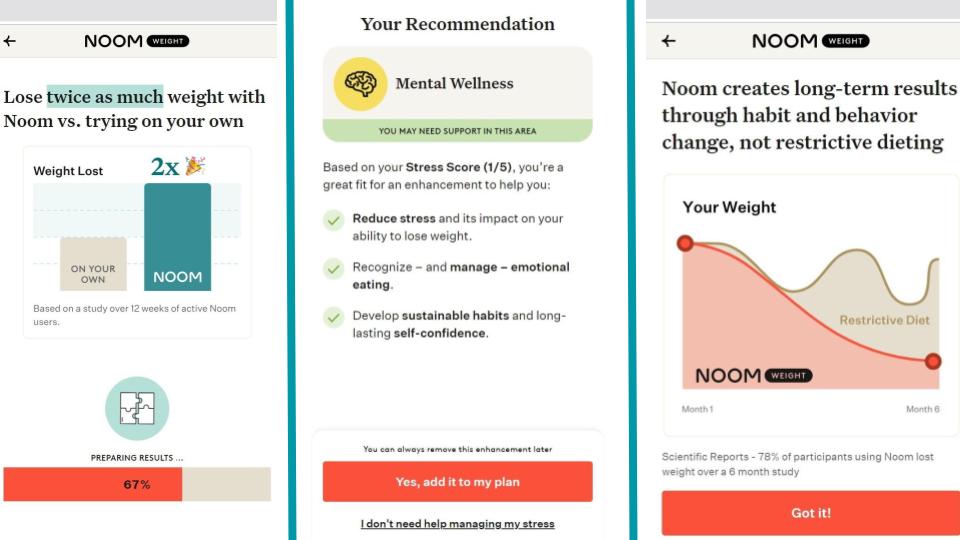
Additionally, registered dietitian Destini Moody says that this approach can cause problematic behaviors and thought patterns in the future. “
“Dietitians don’t hold the philosophy that foods are ‘good’ or ‘bad’ and Noom’s color coding does exactly that,” Destini says. “The type of people likely to download Noom are likely Type A people looking for structure, and this color coding structure makes it easy for people to choose exclusively whatever foods they’ve ambiguously labeled as ‘green.’”
“A healthful diet has room to include all foods and having a diet program structured around the contrary can promote an unhealthy relationship with food and avoidance of foods we get joy from,” she continues. “It seems foods are categorized mainly from their calorie content, but there are some high calorie foods like avocados, nuts, seeds, and lean red meats that are perfectly healthy. In fact, minimizing meat consumption without any clear justification can cause nutrient deficiencies, especially iron and B12.”
You can track your food, workouts, and weight loss progress in the connected app. The app also serves as a community hub where you’ll find various “Noom Circles.” These communities are based on specific personal interests, so you’re able to connect with other Noom users who are into the same things as you. You can also see which groups are trending for that day, so if you want to get involved in an active conversation, you’ll know where you can find the action.
There is only one plan option, but you can choose what type of commitment you make. It starts at a monthly membership and goes all the way up to yearly. If you want to go a month at a time, it starts at $70 per month. If you opt for an annual plan, it’s $209 for the year, which breaks down to a little over $17 per month.
Despite all of the positive aspects, the GGR team member that contributed to our Noom review felt that it wasn’t a good fit for them because the plan requires that you weigh yourself every day, and they have a past of disordered eating so found this to be triggering. Nix also says the color coding system may be triggering for those who have a history of disordered eating as well.
| Subscription options | Monthly to annual |
| Price | Starts at $17 per month, depending on commitment |
| Access to coach | Yes (charged separately) |
| Specific diets supported | All; you can choose your own foods |
| Food/calorie tracking? | Yes |
Best Weight Loss Program for Meal Delivery: Home Chef
Good for: Anyone who just wants meal delivery without any coaching or extra support
Best for Meal Delivery
Home Chef
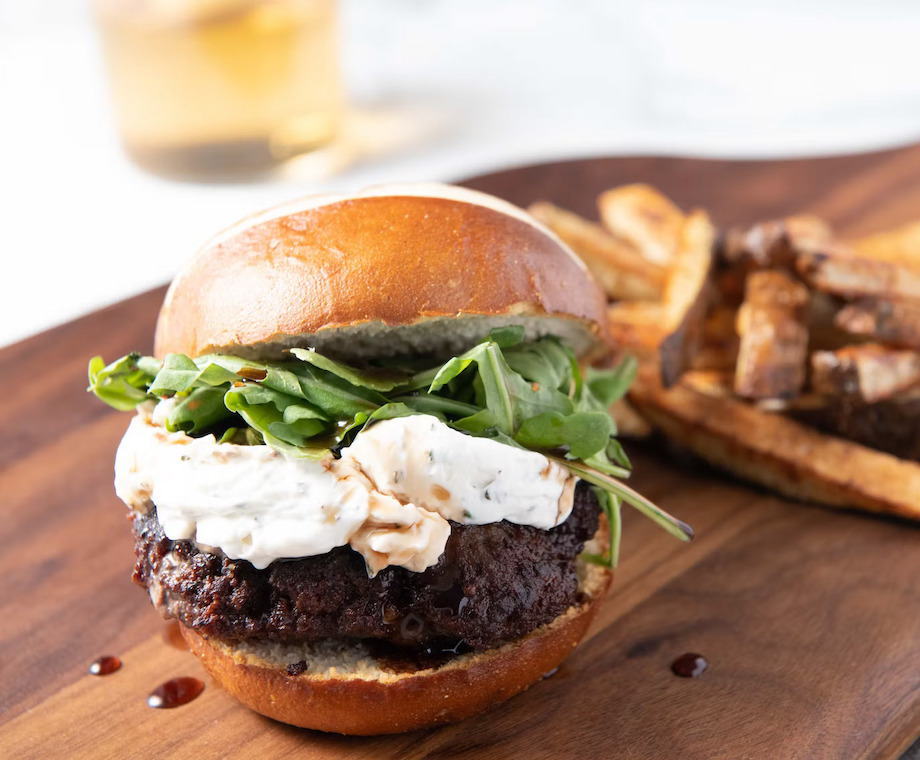
Product Highlights
- Can choose from meal kits, pre-made meals, or grill-ready ingredients
- Recipes can accommodate two, four or six people, and you can get up to six meals per week
- No specific meal plans, but you can narrow down your choices
- Menu changes weekly, with up to 30 meals to choose from
- Requires a subscription, but you can cancel or skip a week anytime
Pros & Cons
Pros
- Menu changes weekly to prevent food boredom
- Options for meal kits or pre-made meals
- Can skip a week if you don’t need a delivery
- Can accommodate larger groups and families (many meal delivery services cap out at four servings per recipe)
- Reasonably priced
Cons
- Doesn’t accommodate a lot of dietary restrictions
- Options can be limited if you’re on a specific diet
- Requires a subscription (that you can skip or cancel, but you have to remember)
Bottom Line
Home Chef is a meal delivery service that gives you options between meal kits, heat-and-eat meals, and grill-ready selections. It does require a subscription, but you can cancel any time or skip a week if you don’t want a shipment.
Home Chef is a meal delivery service—not an official weight loss program—but it’s a good option for those who want help with their eating habits but don’t necessarily need a coach or a support community.
GGR Performance Editor Anthony O’Reilly, a certified nutrition coach, has tried Home Chef, and says it hits it out of the park with each and every box. “Of course, a lot of the meals’ success is based on your cooking skills, but they have well-written and simple instructions to help you get the job done. I don’t think I ever had a bad meal with them.”
The meal delivery service received a perfect 5-out-of-5 stars on portion sizes, taste, and the ordering process. “I’ve had repeat meals a handful of times in 10 months and it’s because I love them,” says one GGR team member who used Home Chef for a year.
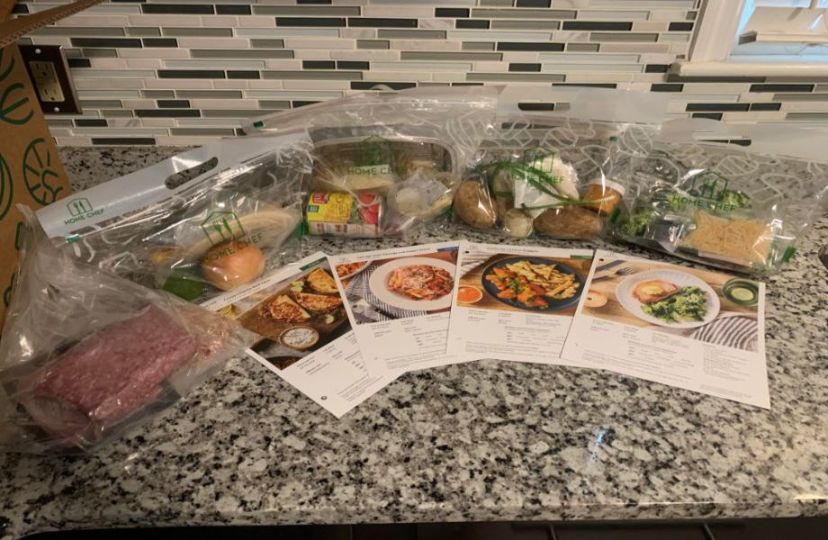
There are no specific diet plans, but when you sign up, you’ll get access to the full menu, which includes about 30 different recipes each week. Not all recipes are created with weight loss in mind, but you can filter to calorie-conscious, low-carb, and vegetarian options, depending on the eating pattern you want to follow. All nutrition facts are listed on the site, so if you want to track your calorie intake or other macros, you can input them to a tracking app.
RELATED: Blue Apron Vs HelloFresh Vs Home Chef
There are meal kits, which include various recipes and all the ingredients you need to make them, and heat-and-eat meals, so you can mix it up depending on how much time you want to spend in the kitchen that week. There are also grill-ready meals that are pre-portioned and pre-seasoned for outdoor cooking.
Eating home-cooked meals, whether using food from a meal kit or the grocery store, is linked to improved diet quality, which is a positive about using Home Chef for weight loss,” says Perry Nix, MS, RD, LD.
You’re not allowed a ton of customization here, but you can choose the foods based on your preferences and eliminate some ingredients. The menu also changes weekly, so you’ll be given plenty of new options each week. If you opt for meal kits, you can let Home Chef know if you’re cooking for two, four, or six, and the recipes and ingredients will be adjusted accordingly.
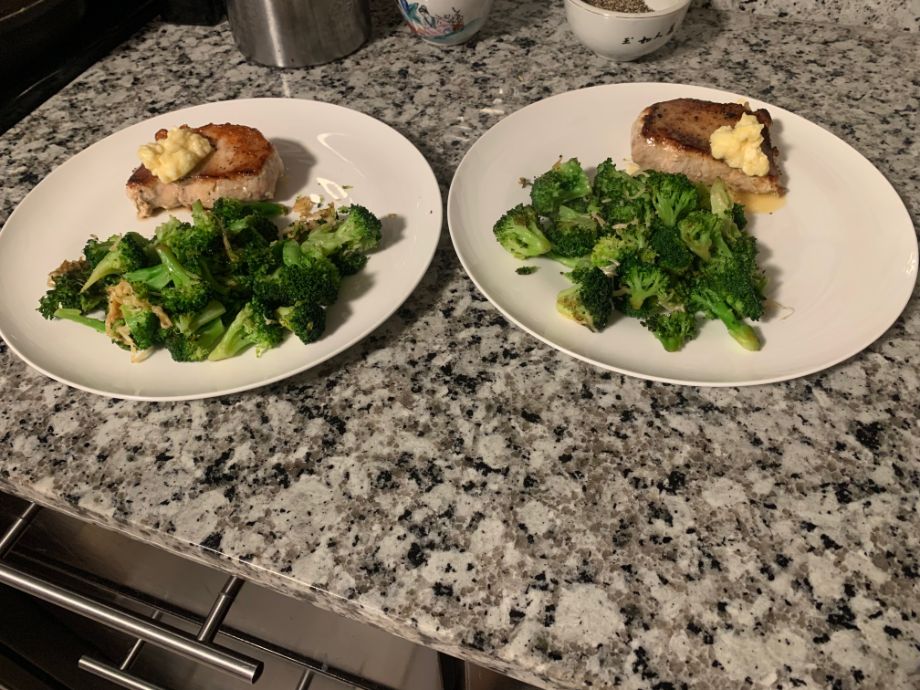
Boxes ship weekly and Home Chef does require a subscription, but you can skip a week or cancel your subscription at any time before your box ships. Anthony said it was a little expensive in his opinion, though I could see how it would be worth it for someone who has to commute and has little time for grocery shopping.
| Subscription options | Weekly |
| Price | Starts at $9.99 per serving |
| Access to coach | No |
| Specific diets supported | Low-calorie, low-carb, vegetarian |
| Food/calorie tracker? | No |
Easiest-to-Follow Weight Loss Program: NutriSystem
Good for: Beginners and anyone who wants a plan that’s really easy to follow
Easiest to Follow
Nutrisystem
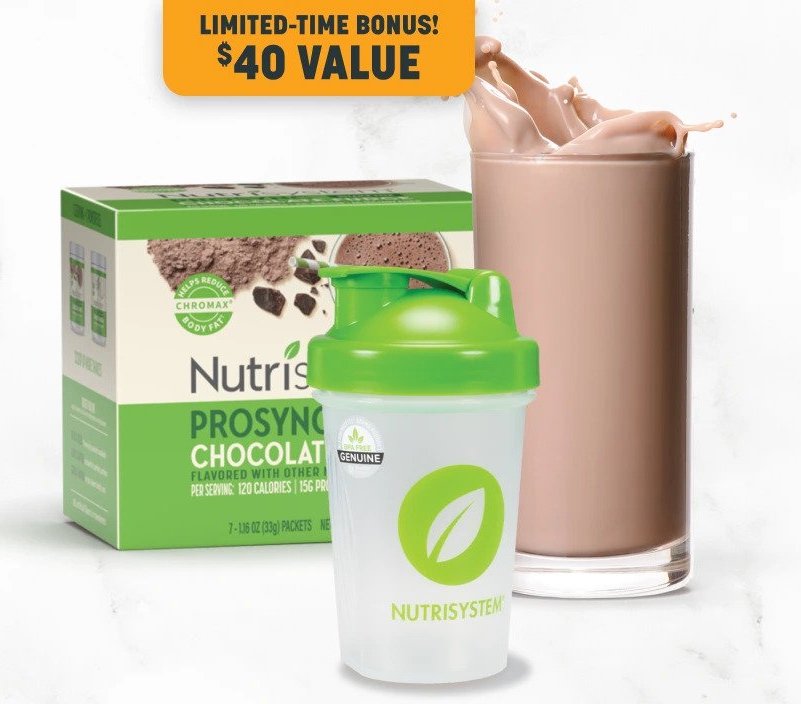
Product Highlights
- Pre-made, pre-portioned food that you heat and eat
- Six plan options to choose from
- Can curate your own food menu or opt for a Chef’s Choice
- Each plan includes breakfast, lunch, dinner, and snacks
- Membership includes access to general coaching and support
- Meals and snacks are frozen or shelf-stable
Pros & Cons
Pros
- All meals are pre-planned and pre-portioned
- Includes breakfast, lunch, dinner, and snacks
- No cooking involved
- Several targeted plans to choose from
- All plans include coaching and support
Cons
- Doesn’t teach you anything about nutrition or how to put your own plan together
- Expensive, but it includes food
- Makes some outlandish claims and focuses on rapid weight loss
- Includes processed foods that may not be the best choices long-term
Bottom Line
NutriSystem is a good option for those looking for convenience, but there’s not a lot of emphasis on learning about nutrition or your habits. Once you’re off the plan, it can be difficult to continue your progress when you have to cook for yourself.
Nutrisystem pretty much takes all the guesswork out of your weight loss journey. Similar to a meal delivery service, NutriSystem delivers pre-made breakfasts, lunches, dinners, and snacks right to your door so all you have to worry about is heating them up and eating them.
All the meals are formulated by a clinical advisory board. They’re already pre-portioned and low-calorie with a balance of protein, fat, and carbohydrates. There are standard women’s and men’s plans, as well as more specialized plans that are tailored to adults aged 55 and older and couples who are on a weight loss journey together.
If you really want an easy-to-follow plan, you can sign up and choose the Chef’s Choice option. With this, the meal plan is designed for you without any input from you. You just sign up, pay, and the food ships to you with minimal effort on your part. Alternatively, you can choose your own meals from all the choices on the menu. Each plan includes three meals—breakfast, lunch, and dinner—plus one snack a day.
The NutriSystem membership does give you access to weight loss coaches who can help guide you through the diet program. You can connect with a coach directly through the account that’s created after you sign up.
One of the major downsides to Nutrisystem is that it relies on packaged, processed foods, and food choices that aren’t the best from a wellness perspective. The focus is mostly on calories, instead of optimizing overall nutrient density. While it’s perfectly fine to eat a chocolate muffin if you want to, this can send the wrong message about how to develop healthy habits when you transition off the plan.
“The Nutrisystem plan provides between 1,200 and 1,500 calories per day, which isn’t sufficient energy to sustain an active lifestyle for many,” adds Perry Nix, MS, RD, LD. “This may make it difficult to keep the weight off after stopping the program leading to weight cycling, which could negatively impact heart health.”
When signing up for NutriSystem, you can opt for a one-time shipment or set your plan up for a recurring monthly subscription. The cost starts at about $12 per day, or $360 a month. It is an investment, but you don’t have to buy additional groceries.
| Subscription options | Monthly or one-time shipment |
| Price | Starts at about $11 per day |
| Access to coach | Yes |
| Specific diets supported | High-protein, low-glycemic |
| Food/calorie tracker? | Yes |
Best Weight Loss Program for Prepped Meals: Factor
Good for: Those who want healthy meals without having to cook them
Best for Prepped Meals
Factor75
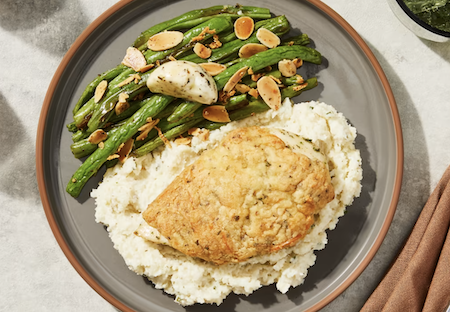
Product Highlights
- Heat-and-eat meals that are delivered weekly
- Five menu plans, including calorie-controlled and keto
- Can mix and match from different menu plans for more variety
- New menus drop weekly
- Can order up to 18 meals per week
Pros & Cons
Pros
- Not restricted to one specific diet plan
- Meals arrive fresh and ready to heat
- Offers options for different dietary preferences
- Can cancel or skip a delivery anytime
Cons
- No options for customization
- No personalized plans for weight loss
Bottom Line
Factor75 is a heat-and-eat delivery service that works well for those on specialized diets. Boxes are delivered weekly, and you can mix and match from different menu plans to maximize your menu variety.
Sometimes the hardest part of a weight loss program is finding the time to cook healthy foods. If that’s your biggest issue, a prepped meal delivery service like Factor (formerly Factor75) can help eliminate this roadblock.
Factor offers heat-and-eat meals that are designed by registered dietitians and cooked by chefs. They arrive fresh and fully cooked. All you have to do is throw them in the microwave or oven and you have a healthy meal on the table in minutes. You don’t have to worry about meal planning or portion sizes.
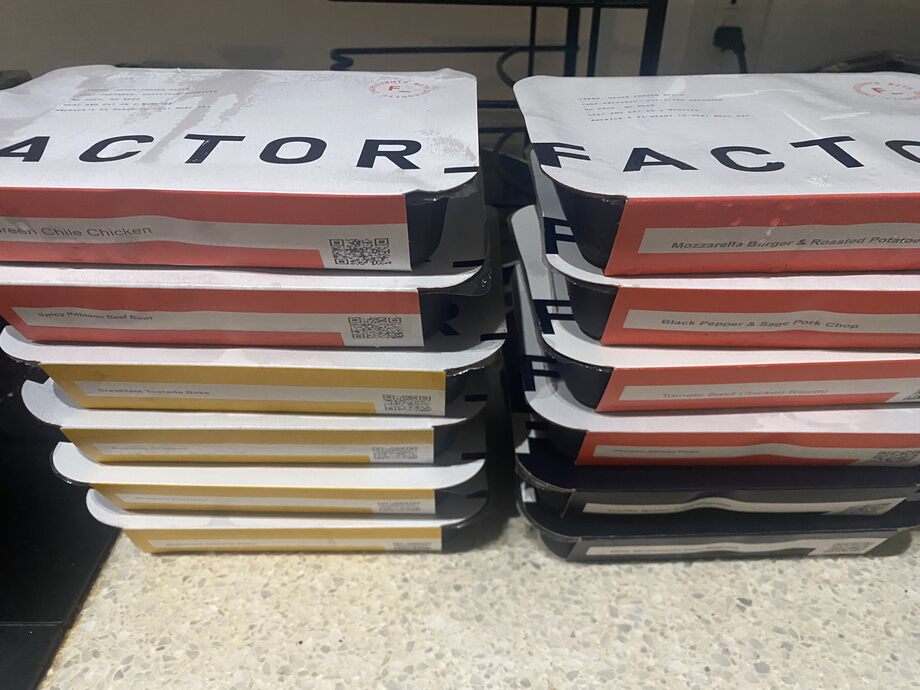
Amanda Capritto, GGR fitness writer and a competitive triathlete, said the ordering process was simple and scored it a 5-out-of-5. The taste got a 4-out-of-5 with Amanda calling it better than OK, but not great. “I think my expectations were a little too high due to all the rave about this brand,” Amanda says. “I can make better food for sure, but the convenience makes the ‘just-decent’ taste more tolerable.”
There are five menu plan options: low-calorie, ketogenic diet, vegan and vegetarian diet, high-protein, and Chef’s Choice (this is curated for you from all the meals and doesn’t follow a specific dietary plan). You can also mix and match from some or all of these plans for more variety.
You can opt for six to 18 meals per week, and menus rotate weekly to help prevent food boredom. In addition to the main entrees, you can also add snacks, premade smoothies, and various sides to your box.
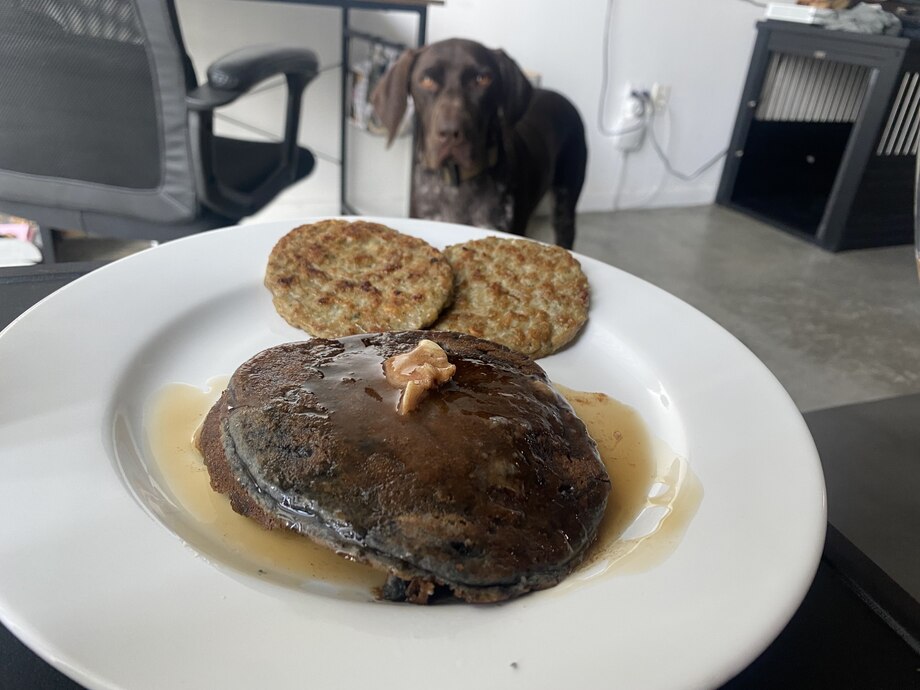
This is a subscription service, so deliveries will automatically ship (and you’ll be billed) every week. But you can skip a shipment or cancel any time—you just have to make sure to go into your account and do it before your weekly box ships.
There isn’t much ongoing guidance here, so it’s best for those who are okay with going on their weight loss journey without a lot of outside support. “Their meals contain anywhere from 350 to 900 calories, leaving it up to you to choose meals based on your personal calorie needs and food preferences,” says Perry Nix, MS, RD, LD. “This program may be suitable for those looking to eat more nutritious meals without putting so much focus on calorie intake.”
However, when you sign up, you will get one free 20-minute virtual coaching session with a Factor nutritionist, which can help get you started. You can also check out our full Factor meals review for more information.
| Subscription options | Weekly |
| Price | Starts at $10.99 per meal |
| Access to coach | One 20-minute virtual session |
| Specific diets supported | Keto/low-carb diets, vegan diets, vegetarian diets, low-calorie diets |
| Food/calorie tracker? | No |
Best Personalized Weight Loss Program: Mediterranean Diet
Good for: Those who want a basic diet outline, but want to be able to design their own plan
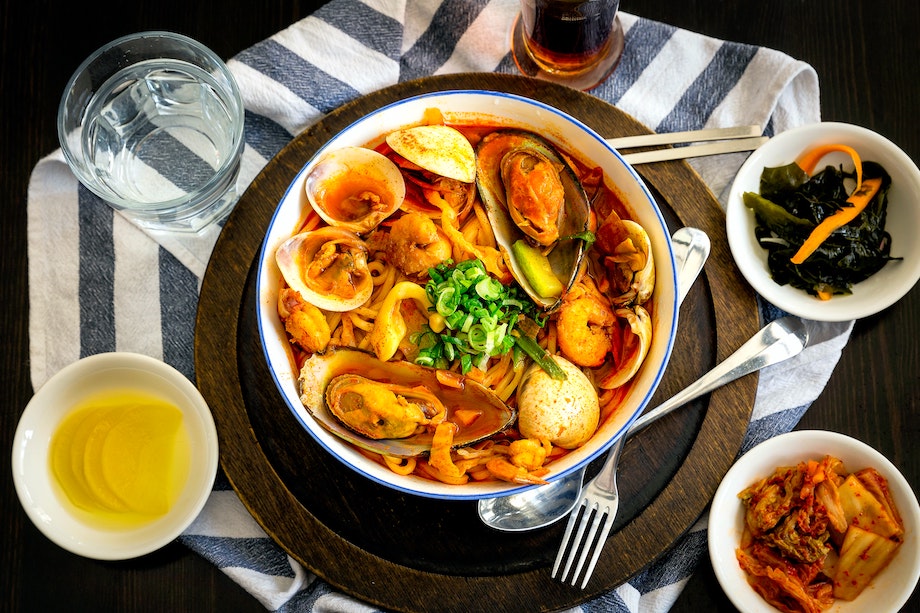
There are a lot of popular diets out there—many are fads, many are weird diets—but some, like the Mediterranean diet1, are tried-and-true, with a lot of research to back up their health benefits. The Mediterranean diet isn’t a weight loss diet per se, but there is evidence that shows that following a calorie-restricted version can promote weight loss, especially when combined with physical activity.
“In order for this to work for weight loss, it would be up to you to determine the quantity of food you eat,
says Perry Nix, MS, RD, LD. “For someone who isn’t in tune with their body’s hunger signals, this could be challenging to navigate.”
However, if you can follow the Mediterranean diet successfully, there’s also evidence2 that it can be superior to low-fat diets when it comes to long-term weight loss results. According to a review published in the British Journal of Nutrition3, the Mediterranean diet can also help with body weight management, especially in those who are getting adequate amounts of protein.
The beauty of the Mediterranean diet is that it’s fully customizable to your needs and preferences. It’s not a strict diet plan—instead, it provides some guidelines and allows you to build your own meal plan from there.
While it’s not a high-fat plan like the keto diet, the Mediterranean diet emphasizes healthy fats like olive oil, olives, and fatty fish. The goal is to make plant foods, like vegetables, nuts, seeds, and whole grains, the foundation of your diet, adding in these healthy fats and small amounts of cheese and dairy daily, and fish and poultry a few times a week. No food groups are excluded, but there are some limitations—like you’re only supposed to eat a small amount of red meat and limit sweets (with the exception of fruit) as much as possible.
The Mediterranean diet has been around a long time, so if you need resources, there’s a wealth of information and recipes on the internet.
Experts Who Contributed to This Article
- Lindsay Boyers, CN
- Nicole Davis, CPT, PN1-NC
- Blair Persyn, MS, RDN, LDN, CNSC
- Perry Nix, MS, RD, LD
- Amanda Capritto, CPT, CNC, CES, CF-L1
- Anthony O’Reilly, CPT, NASM CNC
- Erin Chancer, CNC
- Lindsay Scheele, CPT
Other Weight Loss Programs We Researched
As you probably know, there are a lot of weight loss programs out there. We researched way too many to list here, but wanted to highlight a few that didn’t make the cut for various reasons.
- Jenny Craig: Jenny Craig has been around for a long time, and while the pre-packaged foods are convenient, we think the overall message here is problematic. Aside from the fact that all the foods are highly processed, the company makes some outlandish weight loss promises and we just can’t get on board with that. Plus, there’s an intermittent fasting component, which can be helpful, but might not work for everyone. The foods also arrive frozen—and the price is pretty expensive for what you get.
- Optavia: Optavia relies on extreme calorie restriction and packaged snacks to replace meals, which isn’t the best diet approach for anyone. When losing weight, it’s best to follow a healthy diet filled with real, nutrient-dense foods—not replace those foods with processed items in the name of eating fewer calories. Overall, this is another problematic program and an unsustainable system with short-term benefits (at best).
- DASH Diet: The DASH Diet is highly recommended for those with high blood pressure. And while it can certainly help you lose weight, we just didn’t think it was one of the best weight loss diets. We’re more inclined to recommend the Mediterranean diet if you want to follow a nutrition plan on your own.
- Mayo Clinic Diet: There’s nothing inherently wrong with the Mayo Clinic Diet, we just didn’t think it was the best value for what you get. The meal plans are very simplified, and there’s not a lot of nutritional guidance. While there is a coaching component, it’s in a group setting, which may be uncomfortable for some people.
Benefits of Weight Loss Programs
Weight loss can be hard, especially if you’re going at it alone. From meal planning to grocery shopping to cooking, there’s a lot that goes into it. And if you’re not really sure where to start, you might just give up on it altogether.
Weight loss programs help cut out the overwhelm to keep you focused on your goal. Instead of trying to figure everything out for yourself, you can sign up for the program of your choice, customize it to some degree (some offer specific diets or menu choices), and then the rest of the planning work is pretty much done for you.
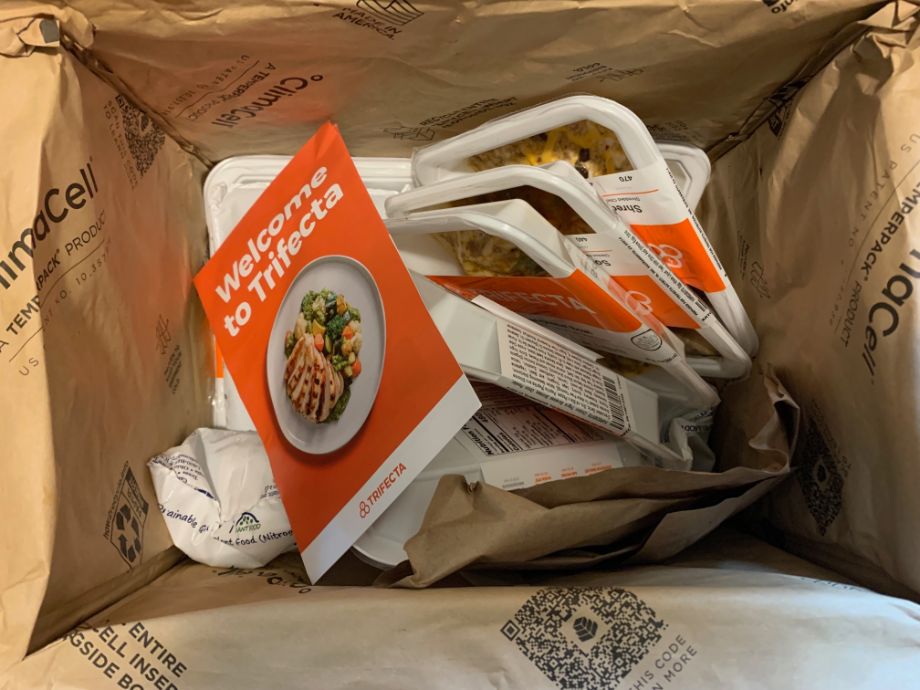
All you have to do from there is eat your meals and snacks according to the plan, try to be as active as possible, and make sure you’re getting enough sleep and water.
The specific benefits of a weight loss program can differ depending on which one you choose, but here are some general benefits you can expect:
- Convenience
- Less overwhelm
- Targeted support
- Access to a community
Buying Guide: What to Look for in The Best Weight Loss Programs
The weight loss and diet industry is a big one. As you can imagine, there are a lot of weight loss programs out there. It can be really easy to get sucked into one based on the claims they make, but a lot of these programs tend to over-promise and under deliver. When choosing a program, consider the types of diets offered, the support you get, and what types of claims the company is making. Of course, you’ll also need to factor your budget in.
Types of Diets Offered
One of the biggest things to look for in a weight loss program is the type of diets they offer. One type isn’t necessarily better than another; you just have to make sure it can accommodate what you want. For example, if you want to follow a vegetarian diet, you won’t like a program that focuses on paleo or keto. If you prefer low-carb, you want to make sure the weight loss program you choose doesn’t focus on whole grains as a foundational food.
If you’re not really sure what you want, look for a weight loss program that offers multiple plans and lets you experiment with them all until you find what works for you.
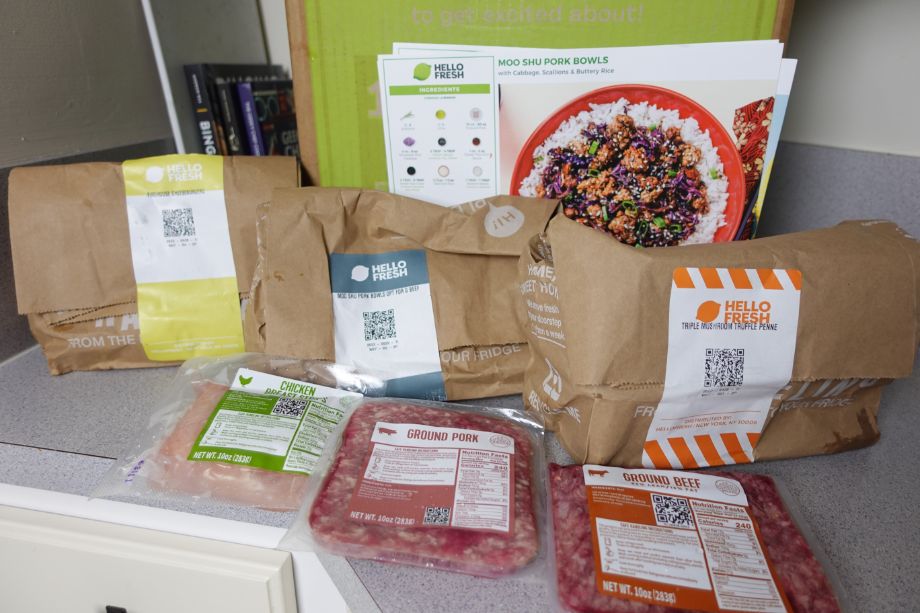
Support
You may or may not want support on your weight loss journey. This is a personal decision. If you do decide you want access to a community or a coach who can help you, make sure the weight loss program you choose has what you need. Some of them ship you meals with no support system. Others offer one consultation without ongoing support. Some provide ongoing support in the form of one-on-one or group coaching. Look through everything you get with your subscription before signing up for one.
Realistic Claims
Do not get sucked into a weight loss program based on unrealistic claims. We repeat: Do not sign up for a weight loss program just because it promises you can lose a certain number of pounds in the first two weeks.
“One of the most important things to look out for are big claims about fast and easy weight loss,” says Blair Persyn, MS, RDN, LDN, CNSC, registered dietitian and owner of Bites with Blair. “The only way to have healthy weight loss is for it to be long-term and sustainable. Any ‘quick fix’ claim should make you want to run for the hills.”
For starters, rapid weight loss isn’t the goal. This can actually lead to yo-yo dieting and resulting weight gain down the line. Very restrictive diets that promise rapid weight loss can also cause side effects, like fatigue, irritability, dizziness, and extreme hunger.
When it comes to weight loss, slow, steady, and consistent is the goal. Choose a weight loss program based on what you think is sustainable—something that you’ll enjoy and can stick to long-term.
The only way to have healthy weight loss is for it to be long-term and sustainable. Any ‘quick fix’ claim should make you want to run for the hills.
Blair Persyn, MS, RDN, LDN, CNSC
Price
Weight loss programs aren’t cheap, and some can be bigger investments than others. Decide what your budget is, and then narrow it down from there. Consider what you’re getting, too. Some weight loss programs include the food. Others, like Noom and WeightWatchers, charge for support and access to the app, but you still have to purchase your food separately. When budgeting for the month, factor all costs in.
FAQs About Weight Loss Programs
What Is a realistic timeline to lose 10 pounds?
In general, you should expect to drop about 0.5 to 2 pounds per week, according to Blair Persyn, MS, RDN, LDN, CNSC, registered dietitian and owner of Bites with Blair.
At that rate, it would take about 5 to 20 weeks to lose 10 pounds. “Keep in mind that it’s normal to have plateaus and weight loss is not linear. If weight loss happens too quickly, you run the risk of losing lean muscle mass, which will make your metabolism slower and future weight loss harder. On top of that, there is a lot of evidence to show that restrictive diets can lead to binging, making people gain even more weight than when they started,” Blair says.
You can also measure progress in other ways, like how your clothes fit and how you feel mentally, so don’t get too caught up on the scale.
What’s the best diet to lose weight?
There’s no single “best” diet to lose weight, since everyone is different. What works well for you might not work well for someone else, and vice versa. At the risk of sounding cliche, the best diet really is one that you can stick to, and that fits your goals and individual preferences.
“The best way to lose weight is to slowly change your eating habits and physical activity over time,” says Blair Persyn, MS, RDN, LDN, CNSC, registered dietitian and owner of Bites with Blair. “The lifestyle changes have to be realistic and enjoyable or they will inevitably backfire.”
If you’re not sure which diet is best for you, work with a qualified nutritionist who can help you decide.
What is the best program to lose weight?
Diet or weight loss programs can be pretty subjective, but here is our list of what we at GGR consider the best diet programs based on the experience of our staff and team of experts.
Best Weight Loss Program Overall: WeightWatchers
Best Personal Training Program for Weight Loss: Future
Best Weight Loss Program for Busy People: Diet-To-Go
Best Weight Loss Program for Beginners: Trifecta
Best Weight Loss Program with Community: Noom
Best Weight Loss Program Meal Delivery: Home Chef
Easiest-to-Follow Weight Loss Program: NutriSystem
Best Weight Loss Program for Prepped Meals: Factor
Best Personalized Weight Loss Program: Mediterranean Diet
What is the most effective form of weight loss?
Simply put, the most effective form of weight loss is a combination of regular resistance and cardiovascular training with a calorie deficit. This is also the best way to maintain your weight loss over time. Weight loss is a marathon, not a sprint, so the weight loss programs that work are going to be the ones that you can stick with for a longer period of time.
These statements have not been evaluated by the Food and Drug Administration. This product is not intended to diagnose, treat, cure, or prevent any diseases.
References
1. Guasch-Ferré, M, Willett, WC. The Mediterranean diet and health: a comprehensive overview. J Intern Med. 2021;290(3):549-566. doi:10.1111/joim.13333
2. Mancini, JG, Filion, KB, Atallah, R, Eisenberg, MJ. Systematic review of the Mediterranean Diet for long-term weight loss. Am J Med. 2016;129(4):407-415.e4. doi:10.1016/j.amjmed.2015.11.028
3. Poulimeneas, D, Anastasiou, CA, Santos, I, Hill, JO, Panagiotakos, DB, Yannakoulia, M. Exploring the relationship between the Mediterranean diet and weight loss maintenance: the MedWeight study. Br J Nutr. 2020;124(8):874-880. doi:10.1017/S0007114520001798
Further reading

Fuel up with the best pre-workout snack ideas! Read more

Have about $1,500 to spend on a treadmill? Check out our Sole F80 vs ProForm Pro 2000 comparison to see if one of these machines might work for you. Read more

Our expert guide on the best pool exercises for weight loss can help you trim inches off your waistline by taking your workouts to the water. Read more

There are a ton of barbells out there in the fitness world. (I should know: I’ve tested nearly 100 of them.) Having trouble choosing one for yourhome gym? Have no fear, Coop from Garage Gym Reviews is here! I’m adding to my collection of barbell reviews with this Fringe Sport Bomba Barbell Review, diving into all of the pros and cons of this blacked-out needle bearing bar. Read more

